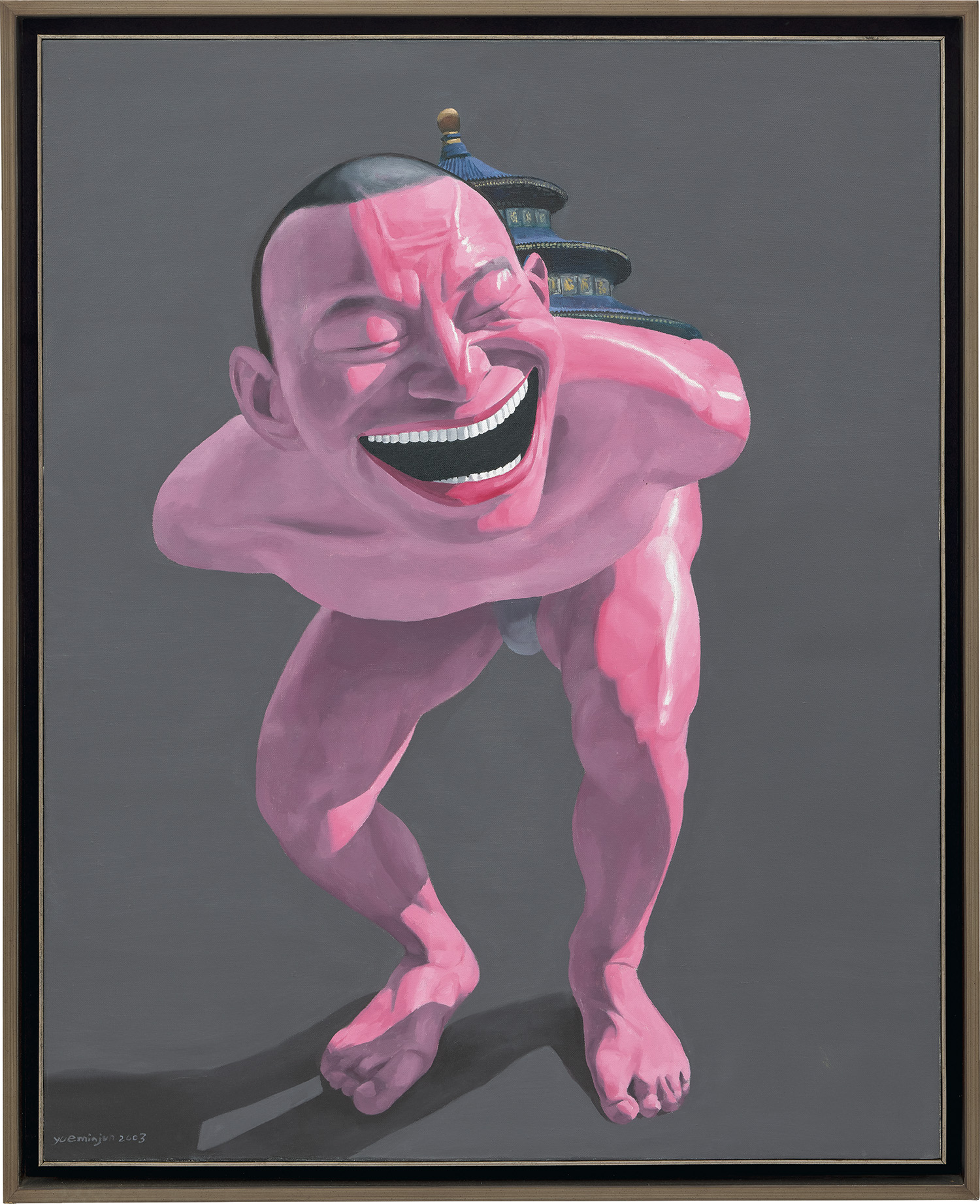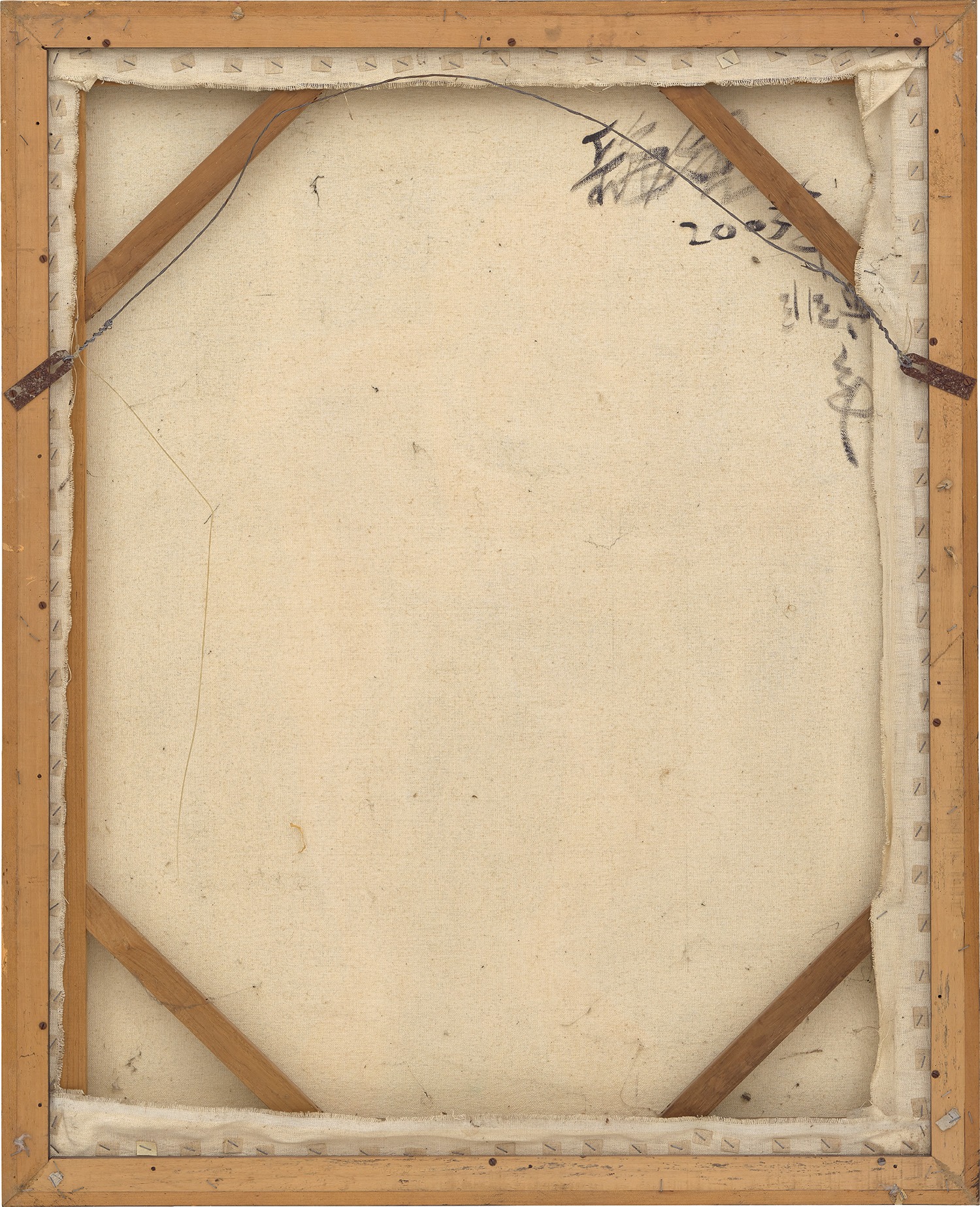





163Ж
Yue Minjun
Altar of Heaven
signed and dated 'yue minjun 2003' lower left; signed, inscribed and dated 'Yue Minjun [in Chinese] 2003 The Year of SARS [in Chinese]' on the reverse
oil on canvas
100 x 80 cm. (39 3/8 x 31 1/2 in.)
Painted in 2003.